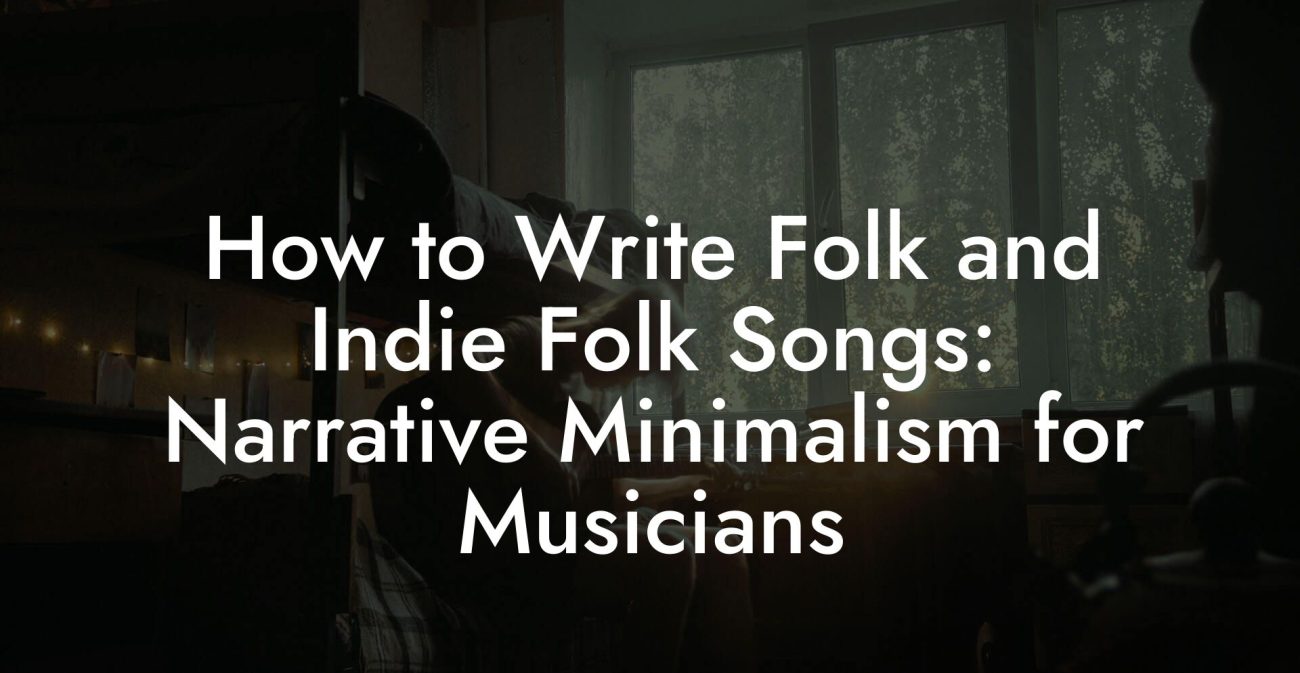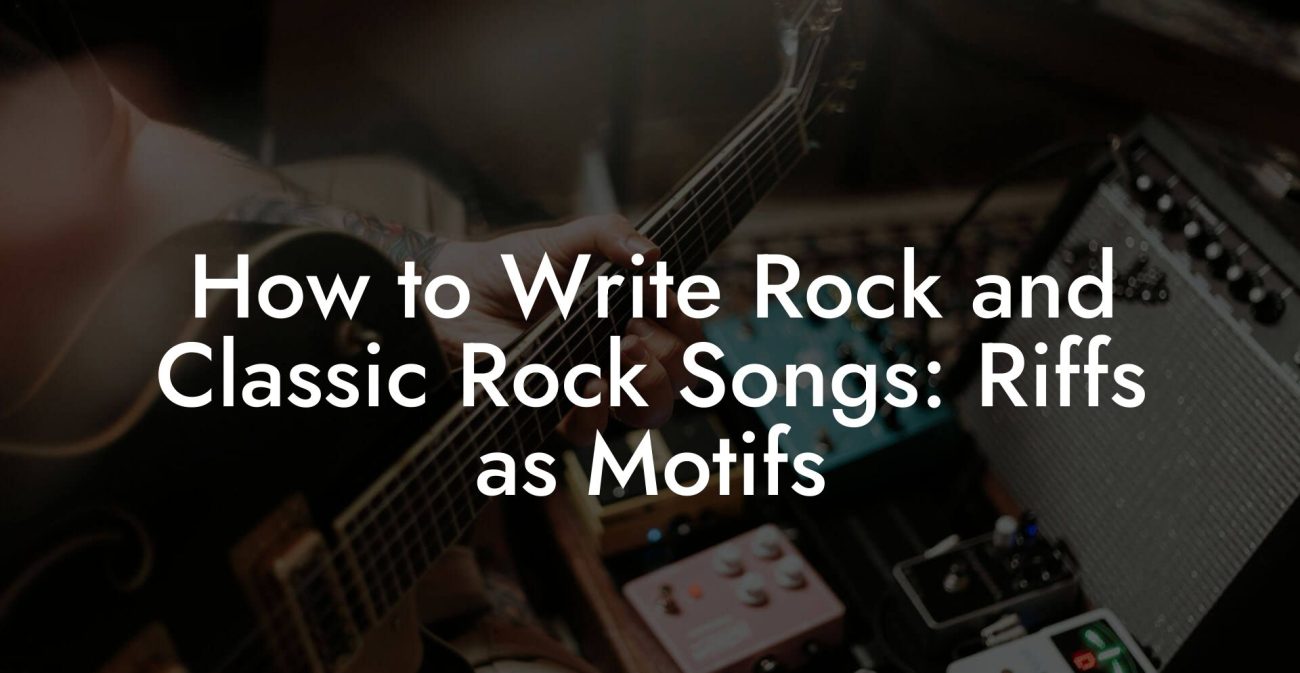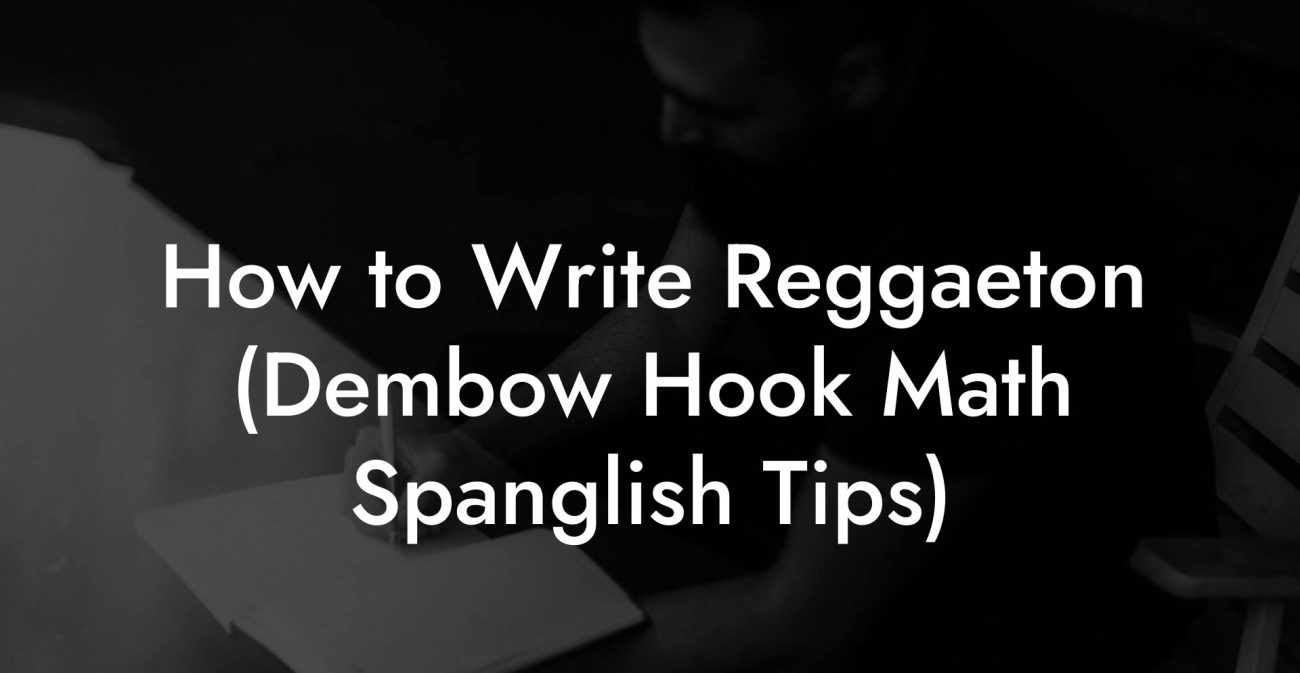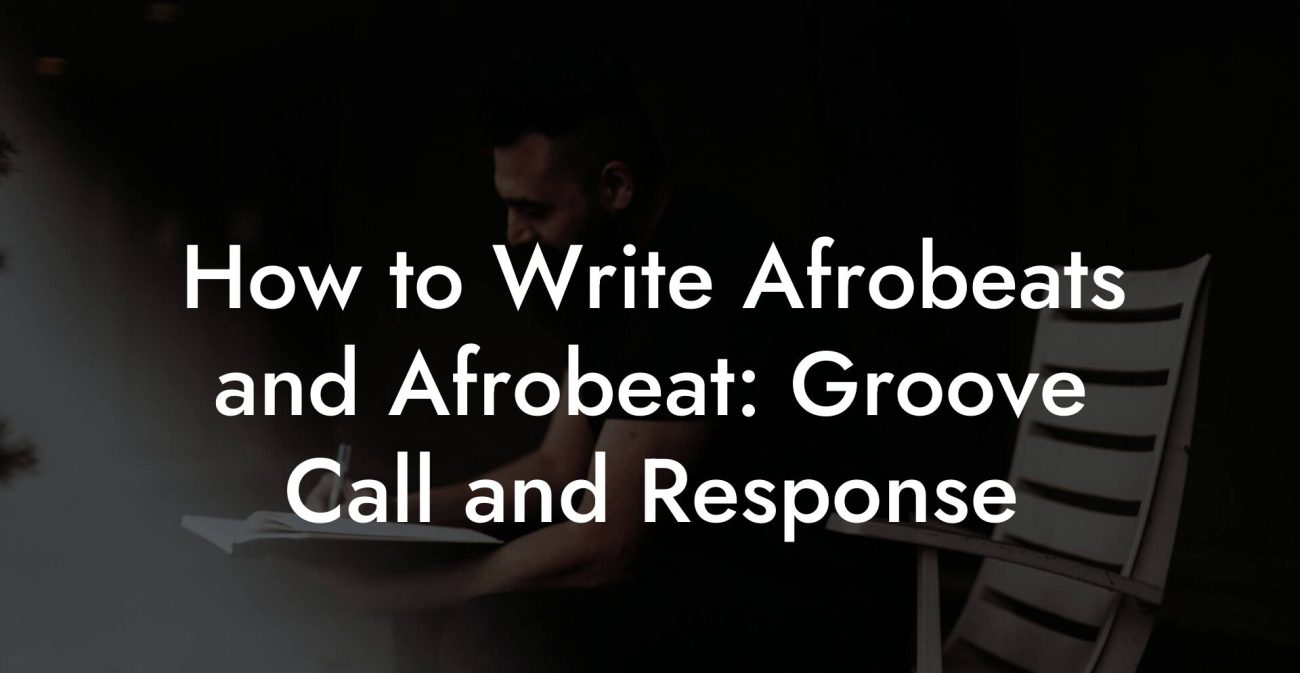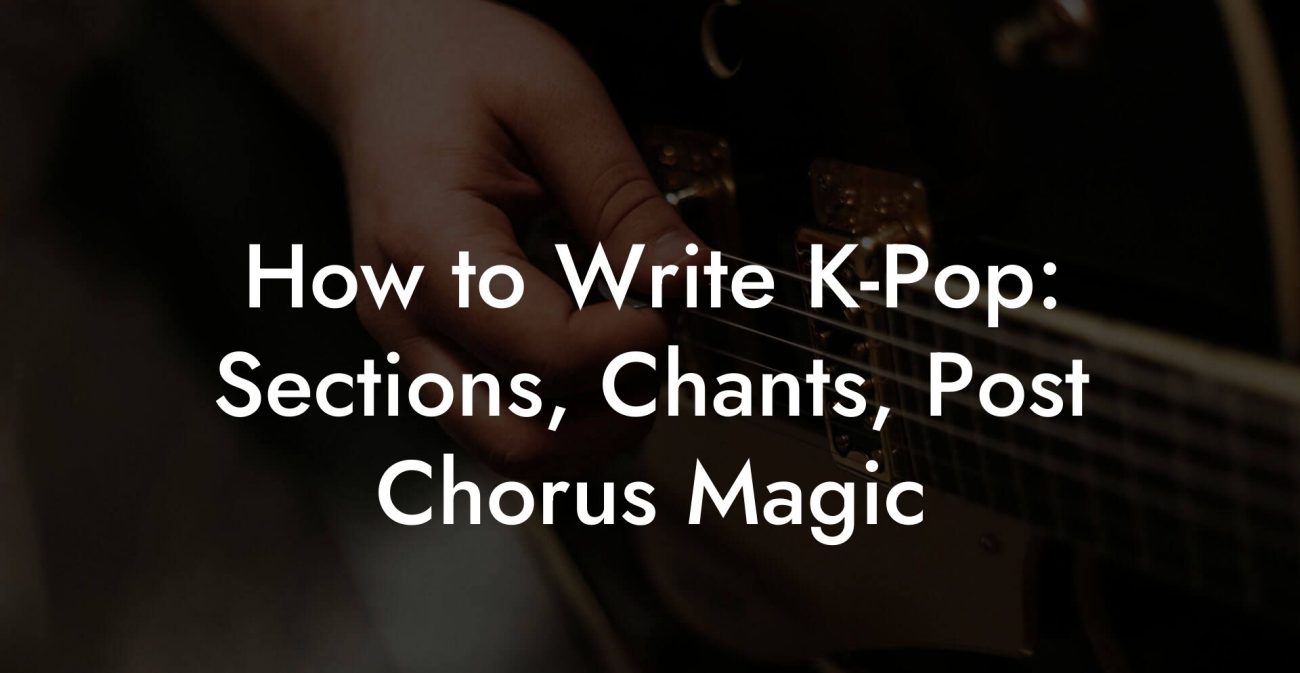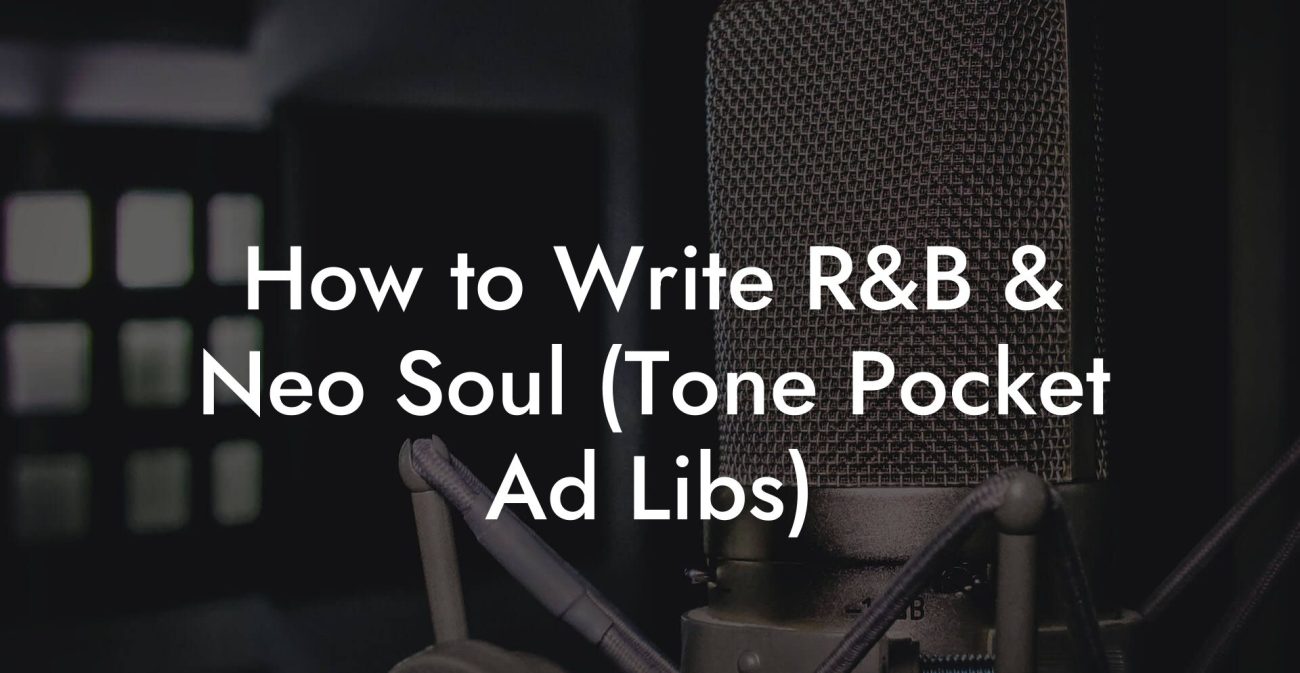Songwriting Advice
How to Write Gospel (Call-and-Response Choir Arranging)
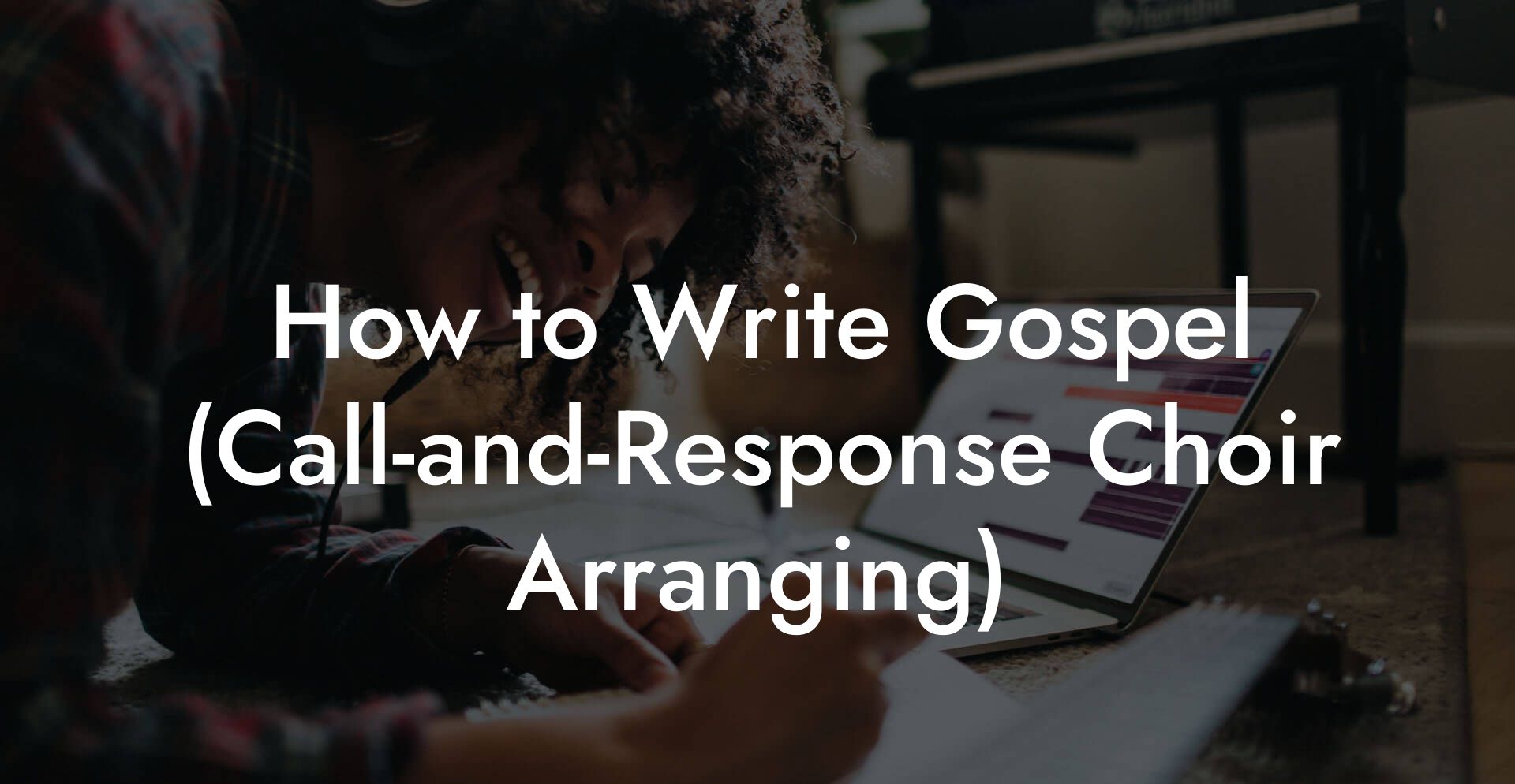
You want a choir that answers you like a squad of holy hypemongers. You want call phrases that land like a sermon and responses that lift the roof. You want arrangements that make congregations clap, tissues appear, and phones stay in pockets because people are too busy singing. This guide gives you the exact tools, layouts, and workflows to write gospel arrangements that feel alive and sound pro.
Quick Interruption: Ever wondered how huge artists end up fighting for their own songs? The answer is in the fine print. Learn the lines that protect you. Own your masters. Keep royalties. Keep playing shows without moving back in with Mom. Find out more →
Quick Links to Useful Sections
- What is Gospel Choir Arranging
- Core Ideas That Make Gospel Arrangements Work
- Call and Response Basics
- Types of Calls
- Types of Responses
- How to Start an Arrangement
- Harmony and Chord Vocabulary for Gospel
- Essential Chords and Why They Work
- Common Gospel Progressions
- Voicing for Choir: SATB Practical Tips
- Range Guidelines
- Voicing Choices
- Writing Responses That Hit
- Response Patterns You Can Copy
- Tags, Vamps, and Shouts
- Vamp
- Tag
- Shout
- Modulation Techniques for Maximum Lift
- Lyric Writing and Prosody for Gospel Choirs
- Tips for Gospel Call Lines
- Writing Responses
- Arrangement Workflows You Can Steal
- Practical Voicing Examples
- Example 1: Warm Close Response in C
- Example 2: Shout Harmony for Impact
- Example 3: Vamp with Color
- How to Arrange for Small Choirs or a Close Group
- Studio Tips for Recording Gospel Choirs
- Rehearsal Hacks That Save Time
- Common Mistakes and How to Fix Them
- How to Keep It From Getting Cheesy
- Examples You Can Use Right Now
- Starter Call and Response
- Shout Section Seed
- Tag to Close
- Performance Considerations
- Advanced Arranging Ideas
- Copyright and Ethical Considerations
- FAQ
This is written for artists, bandleaders, arrangers, church music directors, and songwriters who want arrangements that work in a rehearsal room or a studio. Expect chord recipes, voicings for SATB choirs, call and response patterns, dynamics maps, practical rehearsal hacks, and examples you can copy. We explain every term and acronym so nobody pretends they already know and then freezes in front of the choir.
What is Gospel Choir Arranging
Gospel arranging is the craft of writing parts for voices and instruments that support gospel music. Gospel music is a broad tradition rooted in African American church music. It includes shout sections, soulful harmonies, improvisation, and a deep focus on message and feeling. Arranging for choir in gospel often means designing call-and-response moments. Call-and-response is a musical conversation. The leader sings or plays a phrase and the choir answers. The conversation can be scripted or loosely guided.
We will use a few acronyms. SATB means Soprano Alto Tenor Bass. R&B means Rhythm and Blues. A vamp is a repeating groove or chord pattern. Prosody means the way words fit into melody and rhythm. If you see any other acronym, we will explain it the first time it appears.
Core Ideas That Make Gospel Arrangements Work
- Message first The arrangement must serve the lyric or sermon. Gospel listeners are listening for meaning before they analyze harmony.
- Call clarity Calls should be short and rhythmic so the choir can lock. Less is more. Short calls create space for big responses.
- Response power Responses should be harmonically rich and easy to sing. Layer textures so the choir sounds huge without everyone shouting their vowels.
- Dynamic architecture Plan the rise and release of energy. Gospel lives in peaks and drops. Map them like a roller coaster that ends with a hug.
- Space for improvisation Leave places for the lead singer to adlib and for the choir to react. Not every moment needs to be notated.
Call and Response Basics
Call and response has three roles. The leader makes the call. The choir responds. The rhythm section anchors the groove. Calls can be melodic, rhythmic, or both. A good call is two to six beats long, memorable, and easy to repeat. A good response answers the call with either harmony or a unison line that lifts the phrase.
Types of Calls
- Text calls Short lines of lyrics such as Stop what you are doing. These work well when the message needs emphasis.
- Melodic calls Developed melodic fragments that the choir can echo. Use these when you want musical interest rather than sermon style lines.
- Rhythmic calls Percussive or spoken phrases that cue the choir rhythmically. These are great in vamp sections.
Types of Responses
- Unison shout Everyone sings the same short phrase. High energy and gospel classic.
- Four part harmony SATB splits to create lush textures. Use tight close voicings for warmth and open voicings for lift.
- Call-and-layer Choir answers then layers on a repeating riff or tag. This creates momentum and gives the rhythm section something to play off.
How to Start an Arrangement
- Pick the core message. Write a one line thesis for the song. In gospel that line is the prayer, confession, or declaration. Example: God keeps you even when you forget.
- Choose instrumentation. Piano and organ are gospel staples. Guitar, bass, drums, and a horn section can add modern color. Decide what you want the choir to do and what the band will own.
- Map the form. Identify verses, choruses, vamps, a shout section, a bridge, and a tag. Add time estimates so rehearsals stay efficient.
- Design your call moments. Mark where the leader calls and where the choir responds.
- Sketch the harmonic roadmap. Pick key centers for each section and plan modulations.
Harmony and Chord Vocabulary for Gospel
Gospel harmony loves color. Seventh chords, ninths, and extended chords give emotional shading. You do not need to throw every extension at once. Use them with intention. We will name chords with common chord symbols. If you are unfamiliar with a symbol we explain it right after the first use.
Essential Chords and Why They Work
- Major triads Provide stability. Symbol C means C major.
- Dominant sevenths Add tension that wants to resolve. Symbol G7 means G dominant seventh. This chord often leads to C major.
- Minor sevenths Create warmth and soul. Symbol Am7 means A minor seventh.
- Major sevenths Give a modern soft color. Symbol CMaj7 means C major seventh.
- Ninths and elevenths Add spice. Symbol C9 or C11. Use them in responses and pads.
Important concept: the gospel plagal move sometimes called the Amen cadence moves from IV to I. So in C the move F to C creates a lift that is familiar in church music. You can follow it with a variation like IVmaj7 to I to add tenderness.
Common Gospel Progressions
These progressions are like gospel starter packs. Learn them. You can decorate later.
- I - vi - IV - V. In C that is C - Am - F - G. A classic progression that supports big choruses.
- I - IV - I - V7. Space for a call on V7 and a response on I.
- ii7 - V7 - I. In C that is Dm7 - G7 - C. A jazz informed turnaround useful for intros and tags.
- IV - I with pedal. Hold the bass on IV while chords move above to create tension before resolving to I.
- Modal interchange. Borrow a chord from the parallel minor such as bVI or bVII for emotional color. In C that could be Ab or Bb. Use it sparingly for impact.
Example: The band can vamp on C9 to Am7 then the choir answers on Fmaj7 resolving to C. Simple repeated moves let the leader improvise and the choir lock periods of call and response.
Voicing for Choir: SATB Practical Tips
Writing for SATB means thinking about range and blend. Choir members vary in skill. Make parts singable. Use close voicings for warmth. Use wider voicings for lift. Double parts in octaves when needed.
Range Guidelines
- Soprano: roughly A3 to F5. Avoid pushing above F5 for long unless you have a pro.
- Alto: roughly F3 to D5. Keep high parts comfortable for nonclassical singers.
- Tenor: roughly C3 to A4. Tenors in gospel often sing higher chest voice. Check your people.
- Bass: roughly E2 to E4. Bass parts anchor the harmony. Keep movement simple and strong.
Real life scenario: If you are arranging for a volunteer church choir with mixed experience, keep parts within a comfortable belt range and avoid intricate melismas. For a professional choir you can write higher and include more dissonance.
Voicing Choices
- Close four part All voices within an octave for a gospel quartet sound. Use for intimate or tender responses.
- Spread voicing Place soprano above tenor and bass on the root to create a wide sound. Use for big lifts.
- Cluster moments Add cluster tones on short sustained notes to create tension before a resolve.
- Call doubling Double the call with instruments in unison or octaves for clarity.
Writing Responses That Hit
A great response answers rhythmically and harmonically while lifting emotional weight. Keep responses short. Use strong vowels like ah and oh for big sound. Avoid consonant heavy endings that kill sustain when the choir needs to ring.
Response Patterns You Can Copy
- The Unison Clap Back Choir sings a single unison line on a strong beat then claps. Effective for congregational moments.
- Stepwise Rise Choir hops up a stepwise three note pattern on the first beat of the bar then holds a fourth chord tone for two beats.
- Stacked Harmony Soprano takes the melody with alto and tenor underneath in close harmony and bass plays an anchor on the root or fifth.
Example phrase
Leader call: I need You now
Response: (SATB) You are here You are now You are Lord
Arrange the response so the last chord is full and long. That gives the band time to breathe and the leader time to react.
Tags, Vamps, and Shouts
Gospel arrangements thrive on vamps, tags, and shout sections. These are the parts where energy comes alive and improvisation happens.
Vamp
A vamp is a repeating chord progression or groove. Use the vamp to keep the band tight while the lead improvises. Vamps are also ideal for call and response because the harmonic context does not change. Notate a vamp as a loop with the number of bars or as open ended with a cue from the leader.
Tag
A tag is a short repeated phrase that closes the song. Tags can be melodic or textual. The classic Amen tag is a common gospel tag. Tags let you end on a strong unified line.
Shout
A shout section is high energy, often at the end of a song. Rhythm section pushes with heavy groove. Choir answers with short, shouted lines. Use brass stabs, organ swells, or horn riffs to support. Plan a key change or a tempo push to heighten the effect.
Modulation Techniques for Maximum Lift
Key changes are a gospel favorite. They heighten intensity and reset the choir. Use them strategically. A single step up is more than enough. Two changes can be exhausting unless the band is pro.
- Step modulation Move up by a whole step or half step for the final choruses. Announce it with a rising piano fill or a horn lift.
- Pivot chord Use a chord that belongs to both keys to smooth the modulation. This can feel modern and sophisticated.
- Pedal lift Keep the bass on the same note while the upper harmony shifts. This can give a floating sensation before landing in a new key.
Lyric Writing and Prosody for Gospel Choirs
Prosody is how text aligns with melody and rhythm. In gospel you need lyrics that are short, chantable, and emotionally direct. Write calls that can be repeated by people who have not rehearsed. Avoid long, complex phrases in calls. Reserve storytelling for verses.
Tips for Gospel Call Lines
- KISS. Keep it short and simple. One to four words is ideal for calls.
- Use verbs. Action words create movement and participation.
- Be direct. Phrases like Save me now or Lift my eyes work because they are immediate.
- Test the line spoken, then sung. If the rhythm feels awkward spoken, rewrite it.
Writing Responses
Responses can be longer but still need to be repeatable. Use imagery sparingly. Use a repeated tag that the congregation can join in on. Place the most important word on the downbeat or a long note. A single repeated word such as Hallelujah can have massive impact when timed correctly.
Arrangement Workflows You Can Steal
Want a reproducible method that gets you from idea to rehearsal fast? Use this workflow.
- Map the emotional arc. One line that says the song's heart. Everything is in service to that line.
- Design the call moment. Pick where the leader will call and what the choir answers. Keep an alternate in case it falls flat.
- Write chords for one loop. Two to four bars that the band can vamp on. Try minor 7th moving to dominant 7th to tonic for a soulful feel.
- Draft SATB parts. Make sure ranges are safe. Mark breaths and consonant choices.
- Read through with a pianist. Adjust voicings to avoid muddy low ranges on organ or piano.
- Rehearse at tempo. Cut rehearsal time into focused 10 to 20 minute sprints for each section.
Practical Voicing Examples
Here are actual voicings you can drop into a chart. We show letter names and suggested chord extensions. If you are not comfortable with the theory, pick a pianist who knows these shapes and give them the chord symbols.
Example 1: Warm Close Response in C
Chord: Cmaj7
- Soprano: E
- Alto: C
- Tenor: G
- Bass: C
Notated as a close voicing. Use in a tender response. Sustain for two bars and then move to F for the next line.
Example 2: Shout Harmony for Impact
Chord: F9 moving to C
- Soprano: C
- Alto: A
- Tenor: F
- Bass: F
Use short stabs on beats one and three then land on the C major on the downbeat for release.
Example 3: Vamp with Color
Progression: Am7 - Dm9 - G13 - C
- Call on Am7 with unison melody.
- Response builds with Dm9 and G13 stacked harmonies.
- Resolve to C with full choir on a held CMaj7 chord.
How to Arrange for Small Choirs or a Close Group
Small choirs can sound massive with clever arranging. Use octave doubling, close harmonies, and staggered entrances. Keep rhythms tight. Let the instruments provide the low end so the vocal parts sit in the midrange. Use call responses that require fewer voices. For example have alternating pairs answer and then come together for the final tag.
Studio Tips for Recording Gospel Choirs
Recording a choir is different from live church sound. Mic placement, doubling, and room ambience matter. Use a blend of close mics and room mics. Record multiple passes if you need thickness. If you only have a few singers, record them singing the same parts in two or three takes and comp together to simulate a larger choir.
Real life note: In a session with a budget, track a reference piano and a light guide vocal so singers can lock into phrasing. If the lead is improvising, capture a dry guide vocal for aligning stacked parts later.
Rehearsal Hacks That Save Time
- Teach by ear first. Clap or sing the call. Have singers repeat. Notation can come after the idea is fixed.
- Divide and conquer. Teach sopranos and altos separately then combine with tenors and basses.
- Use anchor singers. Put your strongest singers in each section to help pitch memory for others.
- Record rehearsals. Give singers a reference to practice from later.
- Work in small chunks. Rehearse a call and its response until it becomes second nature before moving on.
Common Mistakes and How to Fix Them
- Too many notes. If singers are fuzzy, reduce the harmonic motion. Fewer changes makes tighter singing.
- Muddy low voicings. Move some bass notes up an octave or give low parts staccato rhythm to maintain clarity.
- Calls that are too long. Shorten calls. You want instant recognition.
- No dynamics map. Mark where to swell and where to hold back. Dynamics create emotion more than scale choices.
- Not rehearsing cues. Teach how the leader cues the vamp end, modulations, and tag repeats. Confusion kills energy.
How to Keep It From Getting Cheesy
Authenticity beats cliché every time. Do not add a tag just because it is expected. Make every shout and tag earned. Keep lyrics grounded and specific. Use restraint with vocal runs if the singer is not comfortable. Harmonies should support the message rather than decorate it. If a suggestion sounds like a gospel stereotype, ask if it serves the song. If not cut it.
Examples You Can Use Right Now
Starter Call and Response
Leader: I need You now
Choir response: You are here You are near
Chord suggestion: Am7 to Dm9 to G13 to C
Shout Section Seed
- Band vamp on F
- Leader: Make some noise for the King
- Choir: Hallelujah Hallelujah Hallelujah
- Build to a key change up whole step for final chorus
Tag to Close
Leader: Amen
Choir: Amen Amen
Hold CMaj7 for four bars with organ swell and soft choir ad libs on the last two bars.
Performance Considerations
In live settings the room will react to volume and frequency. If you play in a small chapel you will get more natural reverb so avoid too many overlapping sustained notes. In a large sanctuary push dynamics and let the room breathe. Encourage choir members to mark breaths and keep consonants consistent so the lyrics remain intelligible.
Advanced Arranging Ideas
Once you have the basics, experiment with polyrhythms, counterpoint between response lines, and layered call sequences where different groups respond in staggered time. Add an obbligato line for a sax or trumpet that mirrors the call with slight variation. Use passing chords and chromatic bass lines sparingly to create movement that intrigues without distracting.
Copyright and Ethical Considerations
If you arrange a hymn or a contemporary worship song check copyright. Many older hymns are public domain but modern songs usually require permission or a license to distribute arrangements. If you arrange for a recording or a paid performance consult a music rights professional. Credit the composer and list arrangement credits in the program or track metadata.
FAQ
What if my choir cannot sing complex harmonies
Start with strong unison and simple two part harmony. Build to three and four parts slowly. Use doubling with instruments to make the choir feel supported. Choose voicings that keep the important notes in the middle of the singers ranges. Over time the choir will gain confidence.
How do I write a call so the congregation can sing it back
Keep the call short and rhythmically simple. Use words that are easy to pronounce when sung. Place the most important word on a long note or the downbeat. Practice it a few times in rehearsal and give the congregation a short lead in on the first performance.
Should I notate every adlib
No. Mark key motifs and cues. Leave space for the lead to improvise. Notating everything can rob spontaneity. Use charts that combine written material for the choir with open sections labeled vamp or ad lib and a clear cue for when the band returns to the chart.
How to arrange if I only have a pianist and a small choir
Lean into the piano. Use left hand to outline bass movement and right hand to add color voicings. Keep vocal parts in mid range and focus on rhythmic clarity. A strong piano can fill the space of a horn section if the pianist uses rhythmic stabs and fills.
Can gospel arranging work in pop or R&B contexts
Absolutely. Gospel call and response enriches pop and R&B arrangements. Use gospel style responses as hooks, and borrow gospel harmonies for emotional lift. Be thoughtful about context so the arrangement fits the song rather than feeling pasted on.




